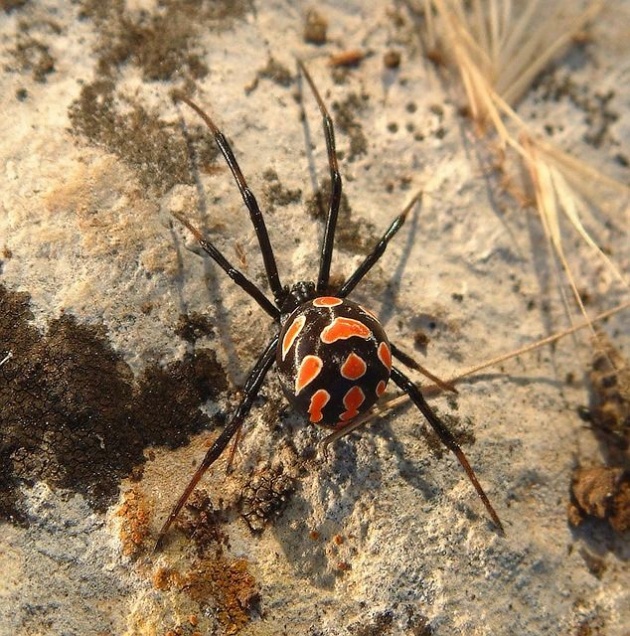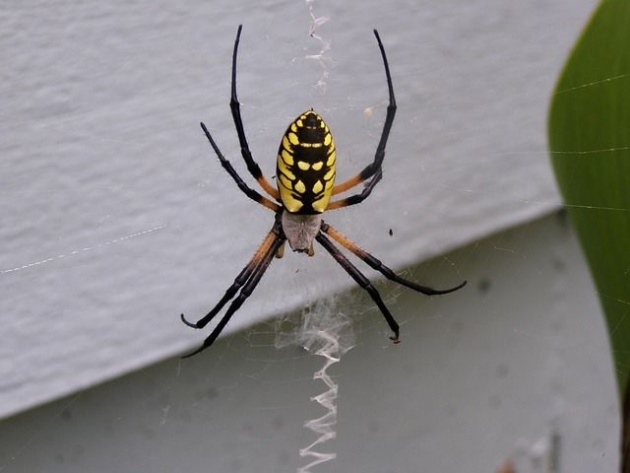

- Arachnids have eight legs with joints, are invertebrates, and have a segmented body covered with an exoskeleton.
- Arachnids do not have antennas or wings.
- Arachnids live on every continent, except Antarctica.
- Most arachnids are covered with fine sensory hairs, which provide a sense of touch.
- Most arachnids are terrestrial, all though some are aquatic.
Types of arachnids
- Harvestmen
- Mite
- Scorpion
- Solifugae
- Spider
- Tick
Facts about Harvestmen
- Commonly referred to as "Daddy Longlegs" or "Granddaddy Longlegs"
- Known for extra ordinarily long legs in relation to their body size, but not all have such extremely long legs
- Do not contain venom glands, so they are not harmful to humans
- Do not contain silk glands, so they do not form webs
- Eat food in large chunks, unlike in liquid-form such as how spiders eat
Facts about Mites
- Most are microscopic
- Some do not have a heart
- Live in soil, water, houses, buildings, and on plants, animals and humans
Facts about Scorpions
- Most dig deep burrows under the ground
- Glow a bright florescent color in the dark when under ultraviolet light
- Are venomous, but the level of toxicity varies from mild in strength to extremely powerful
- Consume food in liquid-form by injecting venom into their prey
- Venom liquefies the inside of the prey allowing the food to be sucked from the prey
- Eat anything from insects to mammals, but may go nearly a year without eating
- Most will enter a state of hibernation, surviving if frozen and thawed
- Reported to have survived a nuclear bomb blast with no notable adverse effects
- Give birth to live young, but some eat their young
Facts about Solifugid
- Has a spider-shaped body, consequently often mistaken as a spider, and is often referred to as "camel spiders", "sun spiders", "wind scorpions", and "solifuges"
- Lay numerous eggs within a deep burrow
- Has an extremely short life span of only one year
- Very fast, but only in short intervals
- Consumes a large amount of insects and other arachnids (some consume small birds and reptiles)
- May bite humans in defense, but the bite is not harmful and will only hurt temporarily
Facts about Spiders
- The abdomen contains spinnerets, which produces silk from several different glands
- Some are herbivorous, but most consume insects and other spiders, and some consume small birds, mammals and reptiles.
- Eat liquefied food by injecting prey with digestive enzymes and then sucking the liquefied food from the prey (some wrap their prey in a cocoon of silk webbing, but others grind the prey to a pulp)
- Fangs contain venom, but most are too small to penetrate human skin
- Venom is used to paralyze prey
- Venom strength within a spider ranges from mild to extremely potent
- Most bites to a human are a mild irritant, but some require immediate medical assistance
- Typically, a spider only bites a human by mistake or out of defense
- The female is larger than the male
- The female typically eats the male after reproduction
- Females lay several thousand eggs in silk eggs sacs (some females die after laying eggs)
Facts about Ticks
- They are tiny, external parasites that feed on the blood from amphibians, birds, mammals and reptiles
- Their bite is painless and typically goes unnoticed
- Will remain on host until gorged, or ready to molt or lay eggs
- Carries and transmits diseases to humans and animals
Copyright © 2016 by John Mallozzi



